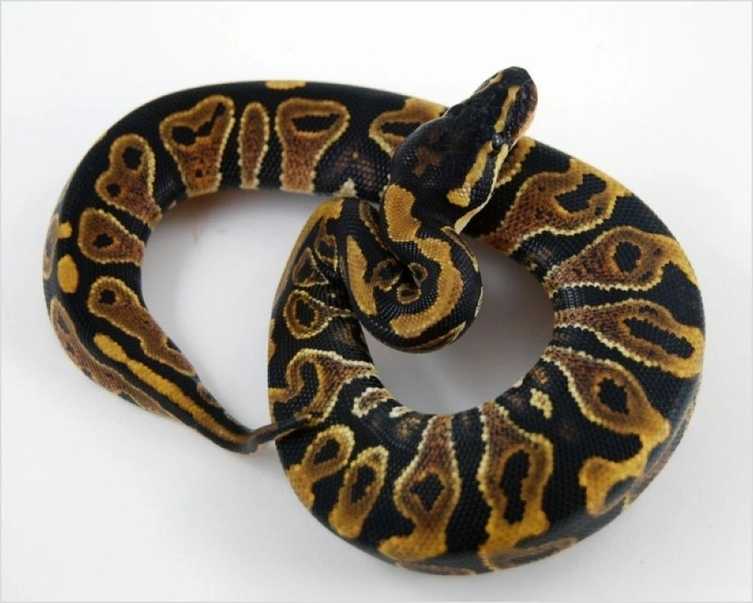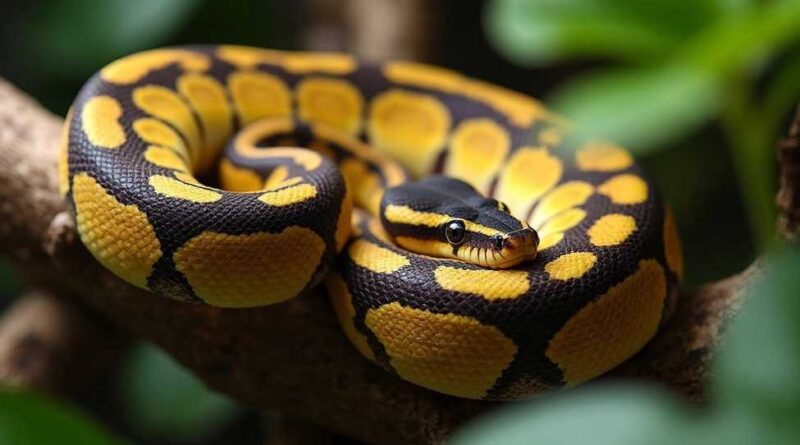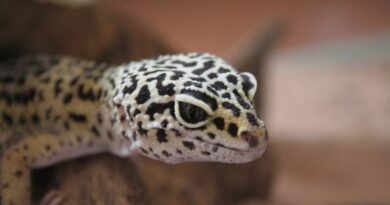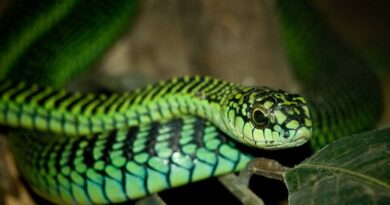Yellow Belly Ball Python: Essential Care Guide for First-Time Owners [2025]
The yellow belly ball python has captivated reptile enthusiasts since its discovery by Amir Soleymani in 1997 and first breeding in 1999. We find this particular morph fascinating primarily because of its rich coloration and distinctive “flames” visible between markings, setting it apart from other varieties. With from Africa since the 1970s, these snakes have become incredibly popular pets—and for good reason. Over three million ball pythons exported
What makes the yellow belly ball python particularly appealing for first-time owners? These snakes are surprisingly laid-back and tolerant of less-than-ideal environments, even though they can reach lengths of 4-6 feet and weights of up to 7 pounds.. Additionally, they feature a clean belly with a checkered pattern that clearly distinguishes them from normal ball pythons. Many beginners ask, “Are ball pythons dangerous?” The answer is reassuring—they’re generally docile creatures that can live 20-30 years with proper care. In this comprehensive guide, we’ll cover everything you need to know about caring for your yellow belly ball python, from habitat setup to feeding schedules and popular morph combinations.
Understanding the Yellow Belly Morph

Image Source: Northwest Reptiles
Identifying a yellow belly ball python can be tricky for beginners. Unlike more dramatic morphs, the yellow belly presents subtle differences that require a trained eye to spot. However, once you know what to look for, these distinctive features become much more apparent.
What makes it different from a normal ball python?
A yellow belly ball python may initially appear to be just another ball python. The key difference lies in the belly pattern—normal ball pythons typically have speckling on their bellies, whereas yellow bellies display a clean, . Furthermore, yellow bellies often exhibit richer coloration, making the black puzzle-like markings appear more tanned compared to normals. Patternless belly with distinctive checkered edges
Many beginners wonder if their snake is truly a yellow belly. According to experienced breeders, if you purchased your snake as a normal, there’s a 99% chance it is indeed a normal. Interestingly, despite the name, not all yellow belly ball pythons actually have yellow-tinted bellies.
Co-dominant genetics and the Ivory super form
The yellow belly gene follows co-dominant inheritance patterns, also called incomplete dominant. This means when a snake inherits one copy of the gene, it displays the yellow belly traits. But what happens when a snake inherits two copies?
In 2003, breeders produced the first “super form” of yellow belly—a striking, patternless snake with creamy-white coloration and a pale yellow dorsal stripe. This super form, now known as the , occurs when a snake inherits two copies of the yellow belly gene. Ivory ball python
Common visual traits: flames, checkered belly, headstamp
To identify a yellow belly ball python, look for these distinctive features:
- Headstamp: A light tanned-brown crown with lighter scales toward the back
- Rich coloration: More vibrant overall appearance than normal ball pythons
- Flames: Distinctive blushing or “flames” extending upward between the alien head markings
- Clean belly: Patternless belly scales with checkered or motley edging where the belly meets the sides
Even with these guidelines, variation exists between individual snakes. Some yellow bellies show stronger traits than others, making identification sometimes challenging even for experienced keepers.
Essential Habitat Setup for First-Time Owners
Setting up the perfect habitat for your yellow belly ball python requires attention to several key factors that directly impact your pet’s health and wellbeing.
Tank size and enclosure type
Initially, juvenile ball pythons do well in smaller enclosures that make them feel secure. They will require more room, though, as they become bigger. For adult yellow belly ball pythons, a provides ample room. Smaller adults can manage in a 36″x18″x12″ space, though bigger is generally better. 4’x2’x2′ enclosure
For enclosure materials, you have several options:
- PVC/HDPE enclosures: Excellent at holding humidity, lightweight, and durable
- Glass tanks: Good for viewing but struggle with humidity retention
- Wooden vivariums: Offer privacy and hold heat well
- Plastic tubs: Budget-friendly and practical for maintaining humidity
Most importantly, ensure your enclosure has secure locks, as ball pythons can be escape artists.
Temperature and humidity requirements
Your yellow belly ball python needs a temperature gradient to properly thermoregulate:
- Basking spot: 88-96°F
- Warm side: 86-90°F
- Cool side: 72-80°F
- Nighttime: 70-78°F
Monitor temperatures using digital thermometers with probes. For heating, you can use under-tank heaters, ceramic heat emitters, or halogen bulbs—just never use hot rocks as they can cause burns.
Humidity should be maintained between 60-80% during the day, rising to 80-100% at night. A digital hygrometer will help you track this essential parameter.
Lighting and hiding spots
Due to their crepuscular nature, ball pythons require 12 hours of light per day in order to preserve their natural rhythm. While they can survive without UVB lighting, modern research suggests it benefits their overall health.
Fundamentally, ball pythons need multiple hiding spots to feel secure. Make sure your snake has a choice between comfort and the right temperature by placing at least two skins, one on the warm side and one on the chilly side.
Substrate options and cleaning tips
Suitable substrates include:
- Cypress mulch or coconut fiber: Excellent for humidity retention
- Reptichip or coconut husk: Absorbs odors well
- Aspen: Good for drier setups
Spot-clean daily by removing waste promptly. Conduct a complete enclosure cleaning every 30 days using a 5% bleach solution, thoroughly rinsing afterward.
Feeding, Handling, and Health Tips
Proper care of your yellow belly ball python extends beyond just setting up the right environment. Feeding, handling, and monitoring health are equally crucial for your reptilian companion’s wellbeing.
What do yellow belly ball pythons eat?
Yellow belly ball pythons primarily eat rodents. In captivity, they thrive on a diet of mice and rats, with some keepers occasionally offering quail chicks as treats or to end hunger strikes. While they can spend their entire lives eating just mice or rats, some owners provide variety with other small mammals like gerbils, hamsters, or African soft-furred rats.
How often should you feed them?
The size and age of your snake determine how often it should be fed:
- Hatchlings (under 5 weeks): Every 5 days
- Juveniles under 200g: Weekly
- Juveniles 200-500g: Every 7-14 days
- Adults (500-1500g): Every 2-3 weeks
- Large adults (over 1500g): Every 4-6 weeks
Remarkably, ball pythons can go months without eating—some survive up to six months during hunger strikes
Handling your snake safely
For newly acquired pythons, avoid handling for the first 24 hours or until they’re moving normally. Subsequently, handle them once or twice weekly to maintain tameness. Before handling, wash your hands thoroughly to remove scents that might trigger a feeding response. Support their body with two hands—one behind the head and another supporting the rest of the body.
Signs of stress or illness
Watch for these indicators of stress:
- Excessive daytime activity (they’re normally nocturnal)
- Refusal to eat
- Hiding head when handled
- “S” shaped neck posture (defensive stance)
- Rapid breathing or open-mouth breathing
Are ball pythons dangerous?
Ball pythons are generally docile, non-venomous constrictors. Although they may bite when young or frightened, these incidents are rare. Bites from juveniles are typically superficial and treatable with warm water and antibacterial soap. Moreover, these snakes earned their name because they curl into a ball when threatened rather than attacking.
Popular Yellow Belly Morph Combos and Pricing
Combining the yellow belly gene with other morphs creates stunning visual variations that captivate reptile enthusiasts. These combinations not only enhance esthetic appeal but often increase market value significantly.
Pastel Yellow Belly Ball Python
The pastel yellow belly combination brightens the snake’s overall coloration with enhanced yellows and tans. This popular morph features contrasting orange, yellow, and black colors that make it particularly eye-catching. Pricing for pastel yellow belly ball pythons starts around $189.95, making them relatively accessible for beginning collectors. Their beautiful coloration and affordability have consequently made them favorites among first-time morph collectors.
Banana Yellow Belly Ball Python
Banana yellow belly ball pythons display a striking yellowish-orange base color with distinctive black freckles that increase with age. Notably, these freckles are a telltale banana trait—not to be confused with mites. Young banana yellow bellies typically start with fewer spots that multiply as they mature. Price points for banana yellow belly morphs typically range from $250-700, depending on quality and additional genetic traits.
Pied Ball Python with Yellow Belly
Sometimes called “Pumpkin Pied,” the yellow belly pied combination creates a visually stunning pattern with rich orange coloring and distinctive pixelation in the saddles. Specifically, look for a subtle headstamp that distinguishes this morph from standard pieds. These striking snakes command higher prices, typically ranging from $700-3500 depending on the percentage of white pattern and whether additional genes are present.
Yellow Belly Ball Python price range
Basic yellow belly ball pythons are remarkably affordable, starting at just $69 for standard specimens. Meanwhile, more complex combinations involving yellow belly genes can reach several thousand dollars. The yellow belly trait serves as an excellent foundation gene for more elaborate morph projects, which explains its enduring popularity among breeders.
Where to find yellow belly ball pythons for sale
Reputable sources for purchasing yellow belly morphs include specialized reptile shops, online marketplaces like MorphMarket, and established breeders. Prior to purchasing, read customer reviews and verify the seller’s reputation. Many customers report quick shipping and healthy animals from established vendors. Certainly worth noting is that each quality breeder typically provides hatch cards and feeding records with their animals.
Short Guide
After all, the yellow belly ball python offers an ideal introduction to the fascinating world of reptile keeping. Throughout this guide, we’ve explored how these distinctive morphs combine beginner-friendly care requirements with stunning visual traits that set them apart from normal ball pythons. Indeed, their unique flames, checkered belly pattern, and rich coloration make them visually appealing, while their docile temperament makes handling less intimidating for novice keepers.
Undoubtedly, proper habitat setup remains the foundation of successful yellow belly ownership. By carefully maintaining appropriate temperature gradients, humidity levels, and providing adequate hiding spots, you’ll create an environment where your snake can thrive for decades. Similarly, establishing a consistent feeding schedule tailored to your snake’s size and age ensures proper nutrition without overfeeding.
For those interested in the genetic aspects, the yellow belly’s co-dominant nature opens exciting breeding possibilities, especially when combined with other morphs like pastel, banana, or pied. Regardless of whether you’re keeping a single pet or planning to explore breeding, these snakes represent an excellent investment with their reasonable starting price point and potential for complex morph combinations.
Lastly, keep in mind that, with the right care, ball pythons can survive for 20 to 30 years. This long-term commitment rewards patient owners with a fascinating companion that, unlike many other exotic pets, remains manageable throughout its life. Whether you’re drawn to their unique appearance, gentle temperament, or breeding potential, yellow belly ball pythons offer a rewarding introduction to reptile keeping that can develop into a lifelong passion.
FAQs
Q1. Are yellow belly ball pythons suitable for beginners ?
A1. For those who are new to snake ownership, yellow belly ball pythons are a great choice. They have relatively simple care needs, are submissive, and are manageable in size. Their gentle temperament makes them easy to handle, making them an ideal choice for those new to reptile keeping.
Q2. How long do yellow belly ball pythons typically live?
A2. With proper care, yellow belly ball pythons can live between 20 to 30 years in captivity. This long lifespan makes them a significant long-term commitment for owners, rewarding patient caretakers with decades of companionship.
Q3. What should I feed my yellow belly ball python and how often?
A3. Yellow belly ball pythons primarily eat rodents such as mice and rats. The size and age of the snake determine how frequently it should be fed. Juveniles should be fed once a week, adults every two to four weeks, and hatchlings every five days. Always provide appropriately sized prey items for your snake’s current size.
Q4. How do I set up the proper habitat for my yellow belly ball python?
A4. Establish a temperature gradient in your cage (cold side: 72–80°F, basking spot: 88–96°F) and humidity range: 60–80%. Provide multiple hiding spots, a suitable substrate like cypress mulch or coconut fiber, and ensure proper lighting. An adult yellow belly ball python typically requires a 4’x2’x2′ enclosure.
Q5. How can I identify a yellow belly ball python?
A5. Yellow belly ball pythons have distinctive features including a clean, patternless belly with checkered edges, rich overall coloration, and unique “flames” extending upward between markings. They also often display a light tanned-brown crown (headstamp) with lighter scales toward the back. However, these traits can vary in intensity between individuals.



